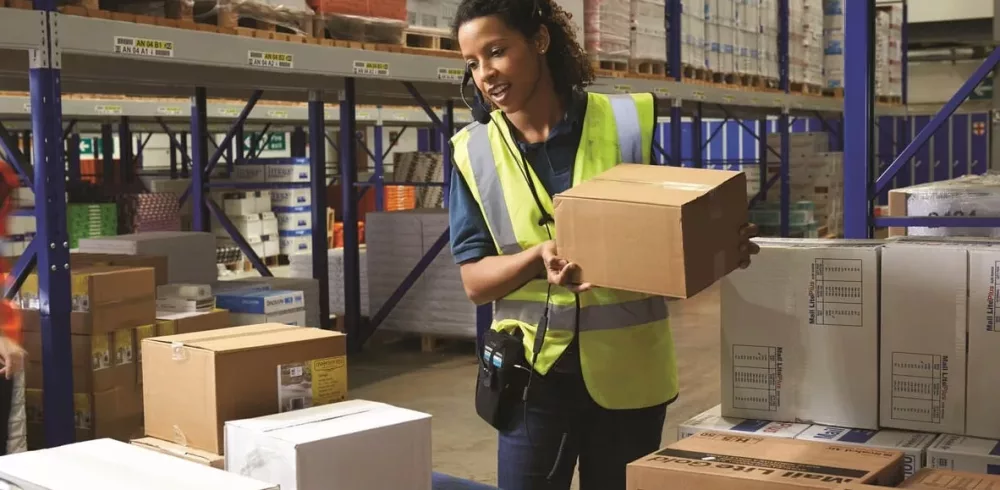New Zebra Study: Data Reveals Top Automation Motives, Labour Challenges in Warehousing : Workforce technology and automation investments need to be communicated as part of improved labour hiring efforts
Zebra Technologies Corporation (NASDAQ: ZBRA), a leading digital solution provider enabling businesses to intelligently connect data, assets, and people, today announced Zebra’s new Automation, Augmentation and Labour Planning report. It includes data revealing the top challenges driving warehousing leaders toward automation and other technology investments and how they could address perceptions of the industry.
Seventy-one percent of European warehousing decision-makers and 73% globally said they need automation to mitigate errors, and 60% (65% globally) cited the need to meet service level agreements. Offsetting labour shortages was the main driver for 75% of those surveyed in Europe and 68% globally.
Attracting qualified workers (49% Europe, 55% globally), training time to achieve full productivity (51% Europe, 54% globally), absenteeism (36% Europe, 33% globally), and loss of labour to competitors (26% Europe, 30% globally) were cited as the top labour problems.
“Labour issues facing the warehousing industry aren’t going anywhere,” said Andre Luecht, Global Transportation and Logistics Lead, Zebra Technologies. “There are a number of problems that, to an extent, are out of the hands of warehousing leaders. These include the lingering memory of job loss and uncertainty experienced during the pandemic, an aging and shrinking demographic, and generational differences when it comes to job and career preference.”
However, warehousing leaders can address some problems including attracting, training, and retaining workers and helping them to be more efficient. “Warehousing has a public perception challenge—it’s seen as manual, high-paced work with relentless targets, which is the underbelly of the need to meet consumer expectations around availability, speed and choice of delivery and returns,” said Luecht. “Yet 83% of warehousing associates in Europe (86% globally) say implementing technology would help attract and retain workers, and 80% in Europe (83% globally) say they would feel more valued by their employer when provided with technology tools and automation to help them do their jobs.”
Warehousing leaders understand this too, with 86% in Europe (88% globally) saying tech can attract and retain the workers they need. Fifty-four percent of European decision-makers (56% globally) also said reducing unnecessary tasks and addressing worker comfort (55% Europe, 54% globally) were among their most important labour initiatives.
The challenge is mapping the right type and level of technology and automation against business need and labour availability, within budget, in sync with legacy systems, and with the right support and training.
“The report tells us that by 2028, having most workers equipped with mobile devices (22% Europe, 24% globally) and workers with devices collaborating with some automation (21% Europe, 24% globally) are the two top scenarios toward which decision-makers are working,” said Luecht, painting a worker augmentation plus automation picture for the near future.
Only 17% in Europe (16% globally) are working toward partial facility automation with no worker involvement in specific workflows by 2028, and a mere 8% (7% globally) want full facility automation with no worker involvement in the entire facility.
“I think the data is telling us that we’re a long way from a ‘lights out’ warehousing industry, even in the face of error mitigation, service level agreements and labour challenges,” said Luecht. “There’s an urgent need to invest in the right type of technology and automation for the current and potential workforce. Once those investments are made, they need to be communicated widely so operational and workforce transformation shape how jobs and the industry are perceived by current employees and potential applicants.”
KEY TAKEAWAYS
- Zebra’s Automation, Augmentation and Labour Planning report reveals the top drivers of warehouse automation and key issues around labour hiring and retention.
- Warehouse associates and decision-makers see technology and automation as a solution to some of the most urgent industry problems.
- Once technology and automation investments are made, they need to be communicated widely to change how jobs and the industry are perceived.
Manufacturing & Engineering Magazine | The Home of Manufacturing Industry News















